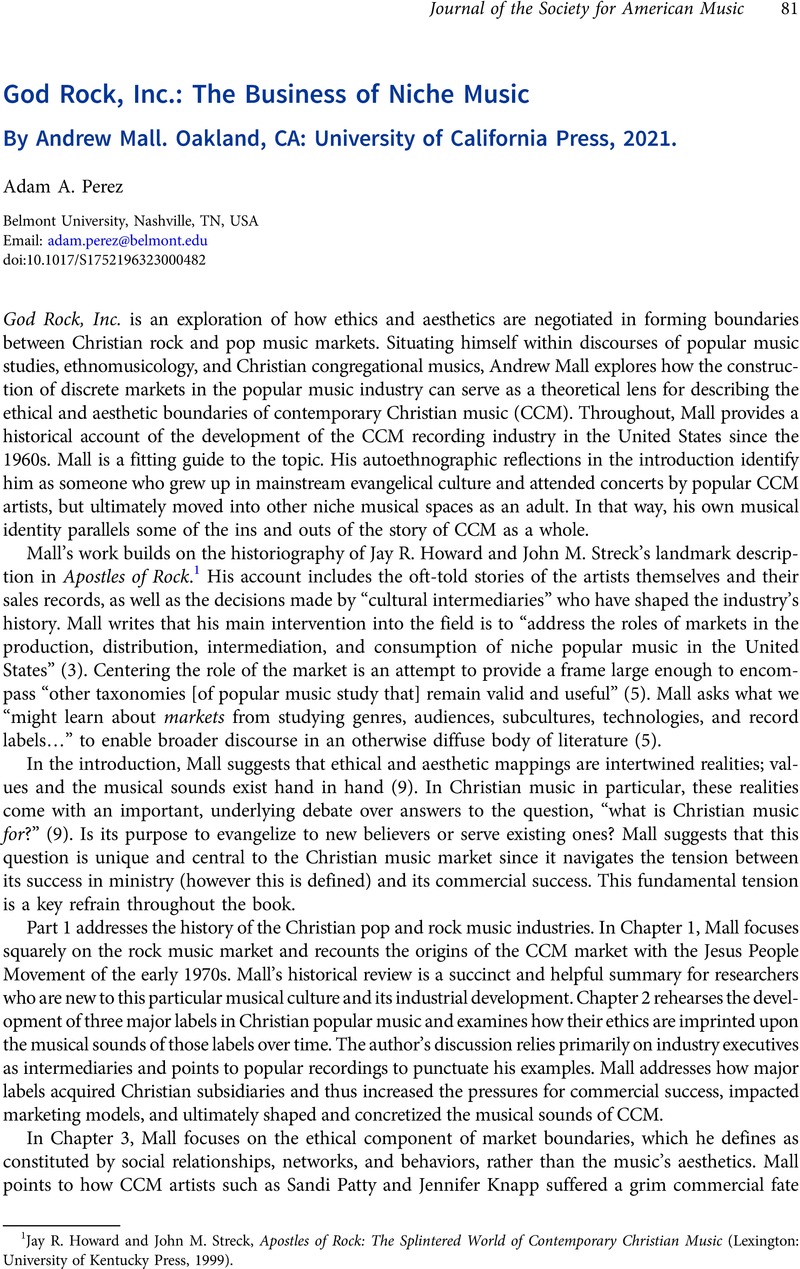No CrossRef data available.
Published online by Cambridge University Press: 26 February 2024

1 Howard, Jay R. and Streck, John M., Apostles of Rock: The Splintered World of Contemporary Christian Music (Lexington: University of Kentucky Press, 1999)Google Scholar.
2 See, for example, Perez, Adam A., “‘It's Your Breath in Our Lungs’: Sean Feucht's Praise and Worship Music Protests and the Theological Problem of Pandemic Response,” Religions 13.1, no. 47 (2022)Google Scholar. https://doi.org/10.3390/rel13010047.